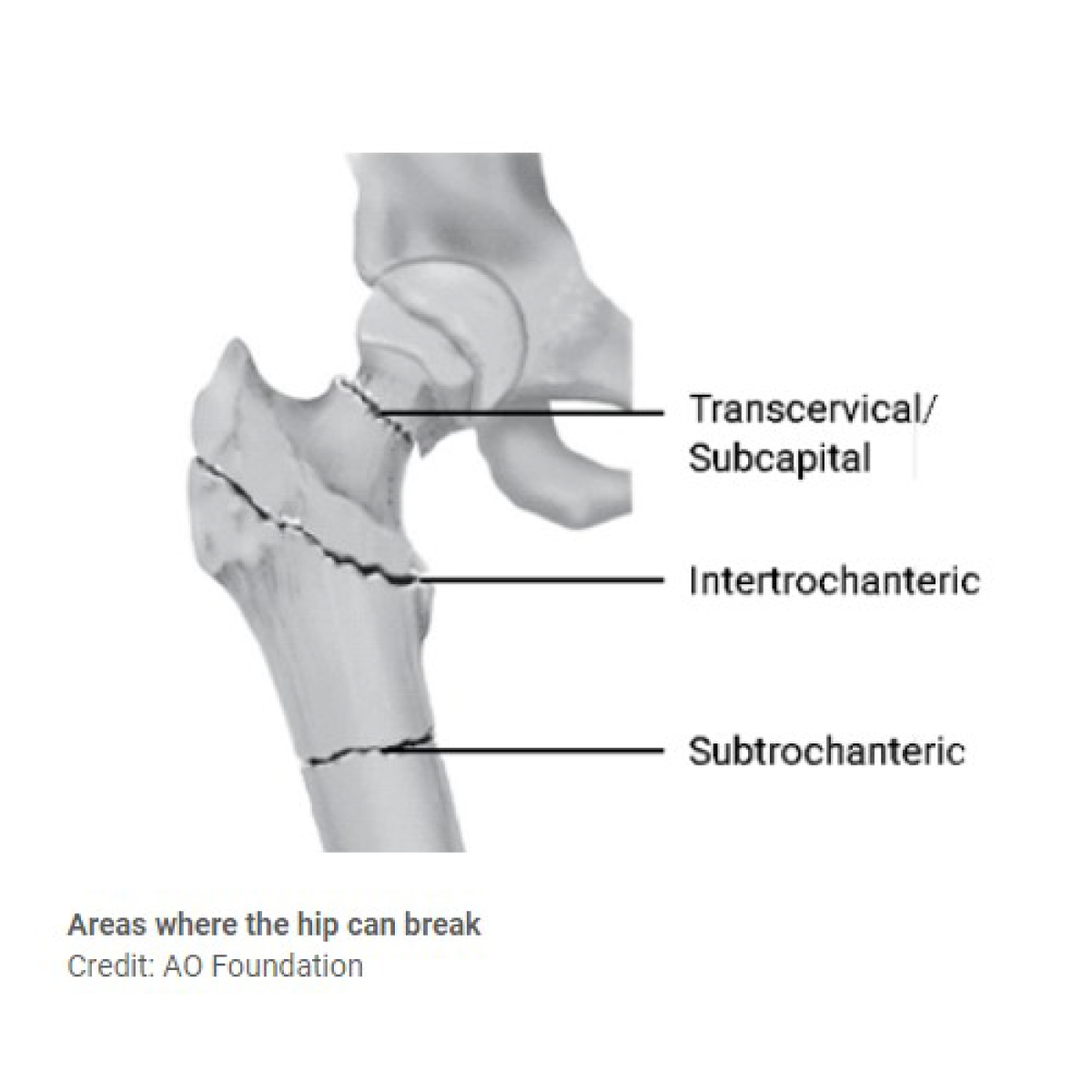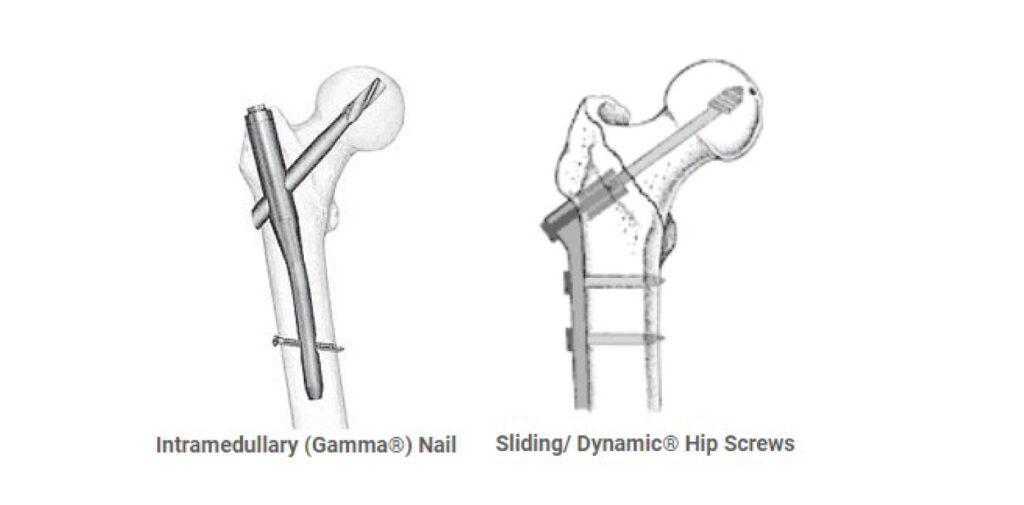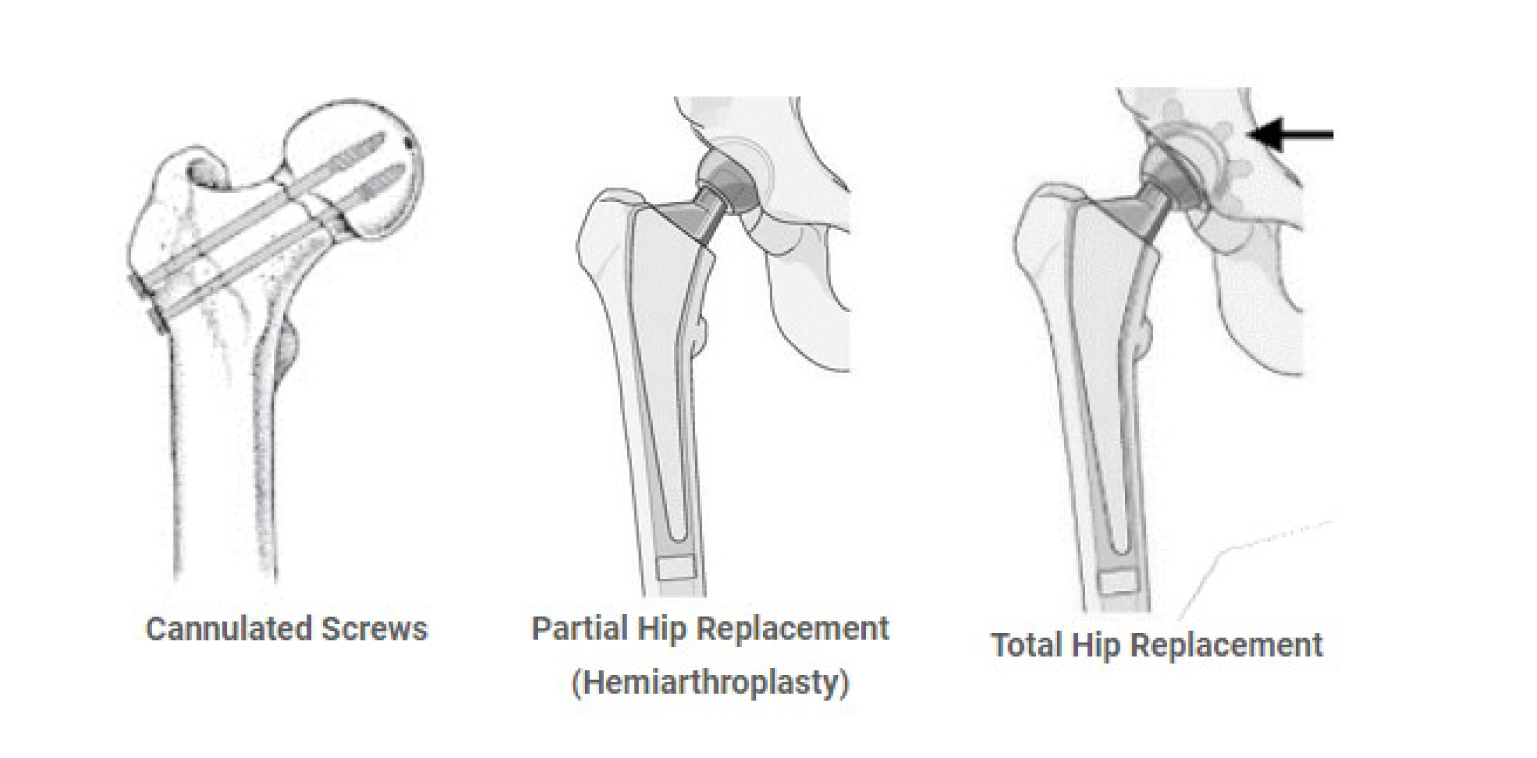Hip Fracture Care Program
Hip Fracture Care at Adventhealth New Smyrna
At New Smyrna Orthopedics, we understand the challenges and anxieties that come with a hip fracture. As a highly experienced orthopedic surgeons specializing in hip care for elderly patients, we are dedicated to providing the most effective and compassionate treatment possible. Our comprehensive hip surgery protocol focuses on minimizing pain, promoting rapid recovery, and helping you regain your independence and quality of life. From the moment you arrive at our facility, we will be with you every step of the way, ensuring you receive the highest quality care and personalized attention.
Hip Fracture Care Program
Hip Fracture Care Program

Intertrochanteric Fractures

Intertrochanteric Fractures are common extracapsular fractures of the proximal femur at the level of the greater and lesser trochanter that are most commonly seen following ground-level falls in the elderly population.
Diagnosis is made with orthogonal radiographs of the hip. MRI is most helpful to evaluate occult hip fractures.
Treatment is generally operative with sliding hip screw versus cephalomedullary nail depending on fracture stability.
Account for :
- ~50% of hip fractures
- 150,000 intertrochanteric fractures per year in US
- 500 per 100,000 population per year for elderly female
- 200 per 100,000 population per year for elderly male
Subtrochanteric Fracture
Subtrochanteric fractures are proximal femur fractures located within 5 cm of the lesser trochanter that may occur in low energy (elderly) or high energy (young patients) mechanisms.
Diagnosis is made with orthogonal radiographs of the hip in patients that present with inability to bear weight.
Treatment is generally operative with cephalomedullary nail fixation.
Femoral Neck Fracture

Femoral neck fractures are common injuries to the proximal femur associated with increased risk of avascular necrosis, and high levels of patient morbidity and mortality. Diagnosis is generally made radiographically with orthogonal radiographs of the hip.
Treatment is generally operative with open reduction and internal fixation versus arthroplasty depending on the age of the patient, activity demands and pre-injury mobility.
Women > Men
Caucasians > African Americans
United states has highest incidence of hip fx rates worldwide
Hip Fracture Care Protocol for Patients:
A Comprehensive Guide
This page provides detailed information about our hip surgery protocol, from pre-operative preparation to post-operative rehabilitation. We encourage you to explore these resources and ask any questions you may have. We are here to support you on your journey back to a brighter outlook.
- Initial Assessment: Upon arrival at the Emergency Department (ED), a thorough examination and imaging tests will confirm the fracture.
- Pain Management: Effective pain management is a priority. Depending on the severity, medication or regional nerve blocks may be administered.
- Medical Optimization: Underlying medical conditions like heart disease or diabetes will be assessed and stabilized for optimal surgical outcomes.
- Nutrition: Maintaining good nutrition and hydration is crucial for healing. Nutritional supplements may be recommended.
- Physical Therapy: Early mobilization exercises, even in bed, help prevent complications and promote post-surgical recovery.
- Social Support: Identifying a reliable caregiver for assistance at home is essential for discharge planning.
- Timing: Early surgery is generally preferred, but medication adjustments may require some delay. The risks and benefits of delaying surgery will be carefully weighed.
- Medications: If you are on blood thinners, their management for surgery will be discussed with your surgeon and physician. Stopping or reversing the medication may be necessary to prevent excessive bleeding during surgery.
- Hold Warfarin, give Vitamin K 5mg PO x 1 ASAP. Goal INR for OR is 1.5 or less for surgery. Re-check INR 12 hours after vitamin K dose. Can proceed with surgery if INR 1.8 or less and patient can get FFP on the way to the OR.
- Clopidogrel, prasugrel, ticagrelor, cilostazol (No need to delay surgery)
- Continue any Acute Coronary Syndrome (treated medically or with stent) within last 12 months
- Continue if drug-eluding stent in last 6 months (in non-ACS)
- Continue if bare metal stent within last 1 month (in non-ACS)
Lovenox. Hold for surgery
NOACs (dibigatran, rivaroxaban, apixiban, edoxaban). Hold before surgery
- Hold. Clearance depends on renal function. Hip fracture surgery with general anesthesia only can be undertaken 24 hours after last dose for all medications and normal renal function (48 hours for Dabigatran and Apixiban and high risk of bleeding).
- Medications: If you are on blood thinners, their management for surgery will be discussed with your surgeon and physician. Stopping or reversing the medication may be necessary to prevent excessive bleeding during surgery.
- Types of Surgery: Different surgical options exist depending on the type and severity of your fracture. Common procedures include internal fixation (pinning or nailing) and joint replacement.
- Anesthesia: Your anesthesiologist will discuss the most suitable anesthesia type based on your health and preferences.
- Recovery: Following surgery, you will be monitored closely in the recovery room and then transferred to a hospital room.
- Effective pain management is crucial for a smooth recovery and rehabilitation. A multimodal approach combining different pain medication strategies will be tailored to your individual needs.
- Physical therapy will start immediately postoperatively to regain pre-injury mobility and manage pain.
- Preventing blood clots (deep vein thrombosis or DVT) is a priority. Medications, compression stockings, and early mobilization exercises will be implemented.
- Wound care and infection prevention are also crucial. You will receive instructions on proper wound care techniques.
- Monitoring for complications like pneumonia or urinary tract infections is essential. Report any new symptoms promptly to your healthcare team.
- Hip fractures are often associated with osteoporosis. Your doctor will discuss bone density testing and treatment options to prevent future fractures.
- Lifestyle modifications like calcium and vitamin D supplementation, exercise, and fall prevention strategies will be recommended and discussed at the first postoperative visit.
- A safe discharge plan will be established, considering your home environment and support system. Home health care or inpatient rehabilitation assistance may be recommended if needed.
- Regular follow-up appointments with the surgeon and physical therapist are essential to monitor your progress and ensure proper healing. Please call (386) 426-1411 or send a text sms (919) 480-2403 pior to discharge to setup a follow up visit with us within 10-14 days.
- This page provides valuable links to informative resources like patient support groups and educational materials.
- Don't hesitate to ask your healthcare team any questions you may have throughout your recovery journey.
You are not alone!
Remember: You are not alone in this journey.
With proactive care and guidance, you can achieve a successful recovery and regain your independence. Note: This information is for educational purposes only and should not be considered a substitute for professional medical advice. Always consult your doctors for personalized recommendations.

Don't let pain hold you back!
Remember, pain is a signal that something is not right. Don’t ignore it. Seek professional help from our New Smyrna Orthopedics team to get the diagnosis and treatment you need to regain your mobility and live a pain-free life. Schedule an appointment with our experienced orthopedic specialists today!
Schedule an Appointment!
